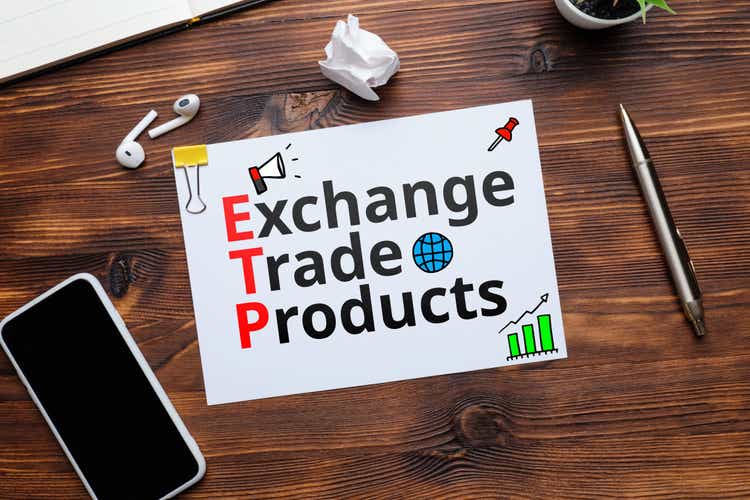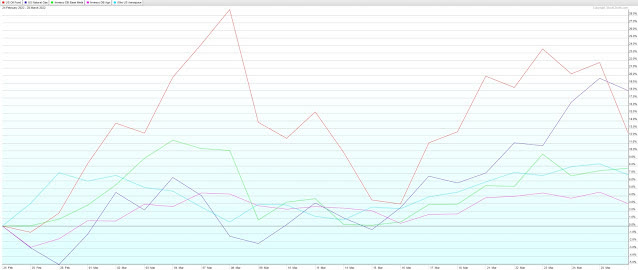gesrey/iStock via Getty Images
On Friday in Flight-to-Safety ETP Performance During Invasion of Ukraine, I reviewed the performance of some of the traditional flight-to-safety ETPs (Treasuries, gold, currencies, and volatility) that are often used to hedge an equity-centric portfolio.
Evaluating the performance of these ETPs since Russia invaded Ukraine a little over a month ago, I found some rather lackluster numbers. As a group, these products have not even broken even since the invasion of Ukraine.
This time around, I have elected to look at the performance of some less traditional ETPs, including some much more targeted products that I have referred to in the past as “point hedges.” Specifically, I looked at areas where exports from Russia and Ukraine are a significant portion of the global export market and whose disruption could have a significant impact on the global balance of supply and demand. As it turns out, these commodities were easy to identify and the price dislocations have generally dwarfed the appreciation one might have been able to realize with more traditional hedges.
These products include:
(USO): West Texas Intermediate Crude Oil (solid red line)
(UNG): Natural Gas (dark purple line)
(DBB): Base Metals (light green line)
(DBA): Agriculture (violet line)
(WEAT): Wheat (light blue line)
(CORN): Corn (black line)
(ITA): Aerospace & Defense (medium blue/green line)
Note that nickel (JJN) should be on this list, but in part due to some chaos and mismanagement at the London Metal Exchange, JJN prices jumped have had multiple spikes of more than 100% and dwarf the performance of other ETPs in this graphic. Additionally, for the international crude oil market, Brent crude oil (BNO) is typically a better measure than USO, but since the Russian invasion of Ukraine, the two ETPs have only differed in performance by about 2%.
It is easy to play Monday morning quarterback and say that with hindsight it is easy to pick the winners, but anyone who studied Ukraine’s biggest contributions to the global export market could have deduced that a supply shortage in wheat and corn was likely and for Russia, natural gas, crude oil and nickel were three areas of high risk in terms of their strategic value to the West, with wheat and corn also part of the equation. I threw in aerospace & defense as a general military hedge.
Unlike the inconsistent and largely negative performance of more traditional flight-to-safety ETPs since the Russian invasion, the point hedges above have all seen gains of at least 3% during this period – and if you remove aerospace & defense from the mix, all the gains are at least 6.8% or higher. This is not to say that more narrow point hedges will usually outperform the broader traditional hedges during periods of geopolitical turmoil, but rather to remind readers that instead of a more generic hedge, a targeted hedge or speculative trade often has the potential to deliver substantially greater returns, such as the median 13% returns from the group of ETPs above.
This also means, of course, that should there be progress in the talks between Russia and Ukraine that each of these point hedges is exposed to the potential of a significant decline in price.

[Source: StockCharts.com]
Disclosure(s): Net short VXX and long USO, DBB, DBA, and ITA at the time of writing.
Editor’s Note: The summary bullets for this article were chosen by Seeking Alpha editors.


Be the first to comment